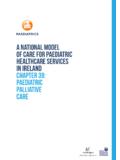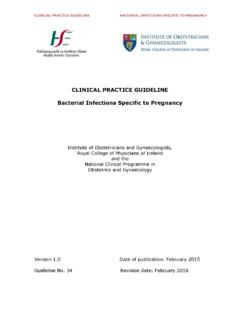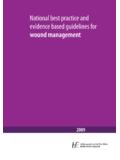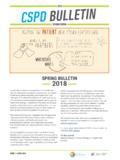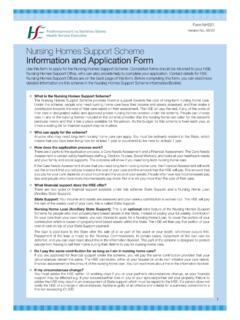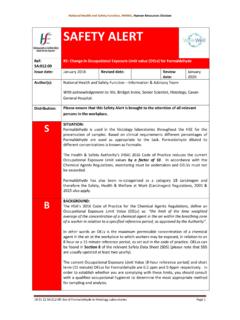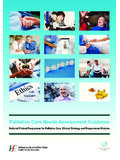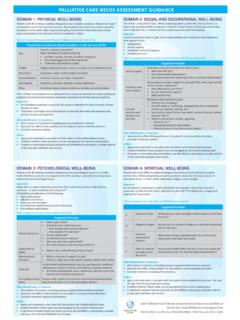Transcription of Medication Guidelines for Obstetrics and …
1 Medication Guidelines for Obstetrics and gynaecology First Edition Volume 1 Antimicrobial Prescribing Guidelines January 2017 2 Preface In Ireland, infection complicates about one in three pregnancies (Downey et al, personal communication). Some are diagnosed and treated in a hospital setting but as overnight bed stays shorten, many are managed in a community setting. The management of infection in the obstetric patient brings with it the same challenges as outside pregnancy, for example, the choice of the most appropriate antibiotic, drug allergies, optimisation of the route and dose of the drug prescribed, the development of antibiotic resistance and the financial cost.
2 However, pregnancy poses its own specific challenges in the management of infection, for example, modulation of the maternal immune system, alterations in pharmacokinetics, the risk of teratogenesis, physiological changes as pregnancy advances, compatibility with breastfeeding. The breaching of physical barriers to organisms increases vulnerability peripartum, which is more likely as interventions such as Caesarean section increase. The increasing mobility of young women with migration and more exotic holidaying increases the risk of infection due to new or emerging organisms.
3 The clinical spectrum of infection varies widely from asymptomatic urinary tract infections to chorioamnionitis which may lead quickly to a critical maternal sepsis that threatens the life and health of the woman and her baby. The clinical presentation may be florid and immediately obvious from the history and examinations or, may be subtle and difficult to diagnose even with sophisticated investigations. Modern medicine has witnessed major advances in our knowledge of the prevention and treatment of infection and its adverse clinical outcomes, including sepsis.
4 There have been advances in microbiological surveillance and in therapeutics. We also know that worldwide, even in well-resourced countries there are wide variations in clinical outcomes in both hospital and community settings which may be attributable, in part, to variations in treatment including drug usage. The purpose of this First Edition of a National Medications Programme (Volume 1) for antimicrobial prescribing in pregnancy is to improve the quality of care for all women and their offspring attending our maternity services whatever the setting.
5 It follows the development of a number of clinical practice Guidelines for infections and pregnancy by the Clinical Programme in Obstetrics and gynaecology , and the recent appointment of antibiotic pharmacists for the maternity services in all six Hospital Groups in the country. It also addresses one of the key priorities identified by the National Implementation Group which supports the implementation of the HIQA Patient Safety Investigation report into services at University Hospital Galway. This First Edition will be disseminated widely for implementation using a variety of communication channels.
6 We anticipate that as our knowledge grows, as patterns of infection evolve, as diagnostic techniques improve etc that this Edition will have to be frequently revised. We would also welcome ongoing feedback on this repository from frontline staff in the future. We thank all our colleagues around the country who contributed both individually and collectively and who generously shared their expertise in this national endeavour. We thank Gethin White and Aoife Lawton from the Library in Dr Steeven's Hospital for their academic resourcing, and Caroline Plascott and Martin McNicholl for their strong administrative support.
7 We would also like to thank Ms. Michelle O Connor for her invaluable help in formatting this document. Finally, we 3 acknowledge the support of Ms. Angela Fitzgerald and her colleagues in the HSE Acute Hospital Directorate. Mairead McGuire Richard Drew Michael Turner Project Manager Consultant Microbiologist Clinical Lead Obstetrics and gynaecology Programme 4 Acknowledgements These Guidelines were reviewed comprehensively by a large number of multidisciplinary healthcare professionals. The following list contains healthcare professionals involved in the review of this document, either in part or the entire document.
8 Siobhan Barrett, University Hospital Limerick Joan Blake, Cork University Maternity Hospital Professor Colin Bradley, Primary Care Antibiotic Guidelines Editorial Group Professor Brian Cleary, Rotunda Hospital Dr Brenda Corcoran, HSE National Immunisation Group Ciara Cronin, South Tipperary General Hospital Dr Rob Cunney, Children s University Hospital, Temple Street Dr Miriam Daly, Director Women s Health Programme, ICGP Aoife Delaney, Cork University Maternity Hospital Dr Richard Drew, Rotunda Hospital Peter Duddy, Coombe Women and Infants University Hospital David Fitzgerald, National Maternity Hospital Emma Flaherty, University Hospital Limerick Ms Rosina Hanniffy, Coombe Women and Infants University Hospital Dr Mary Higgins, National Maternity Hospital Diane Hogan-Murphy, Cavan General Hospital & University Hospital Galway Carmel Healy, Coombe Women and Infants University Hospital Dr Susan Knowles, National Maternity Hospital Dorothy McCormack, National Maternity Hospital Carmel McKenna, Our Lady of Lourdes Hospital, Drogheda Dr Deirdre O Brien, Mercy University Hospital, Cork.
9 Primary Care Antibiotic Guidelines Editorial group Dr Nuala O Connor, ICGP Lead Antimicrobial Stewardship Group, GP Lead on HCAI/AMR Clinical Programme Ciaran O Flaherty, Midland Regional Hospital, Portlaoise Dr Eoghan O Neill, Chair, HSE Hospital Antibiotic Stewardship working group, RCPI Sabrina O Regan, Portiuncula Hospital Dr Niamh O Sullivan, Coombe Women and Infants University Hospital Una Rice, Coombe Women and Infants University Hospital Professor Michael Turner, Obstetrics and gynaecology Programme 5 Contents 1 ABBREVIATIONS .. 8 2 INTRODUCTION .. 9 PURPOSE.
10 9 METHODOLOGY .. 9 3 TREATMENT MONOGRAPHS FOR INFECTIONS IN PREGNANCY .. 11 INTRODUCTION .. 11 TREATMENT MONOGRAPHS: ANTENATAL INFECTIONS .. 12 Urinary tract .. 12 Pyelonephritis .. 12 Chorioamnionitis .. 13 Listeriosis .. 13 TREATMENT MONOGRAPHS: ANTENATAL INFECTIONS - SEPSIS .. 14 Sepsis .. 14 Sepsis (Severe) .. 14 TREATMENT MONOGRAPHS: ANTENATAL INFECTIONS-INTRAPARTUM .. 15 Intrapartum pyrexia .. 15 TREATMENT MONOGRAPHS: INTRAPARTUM ANTIMICROBIAL PROPHYLAXIS AND PRETERM PREMATURE RUPTURE OF MEMBRANES 16 TREATMENT MONOGRAPHS: POST-PARTUM INFECTIONS.
